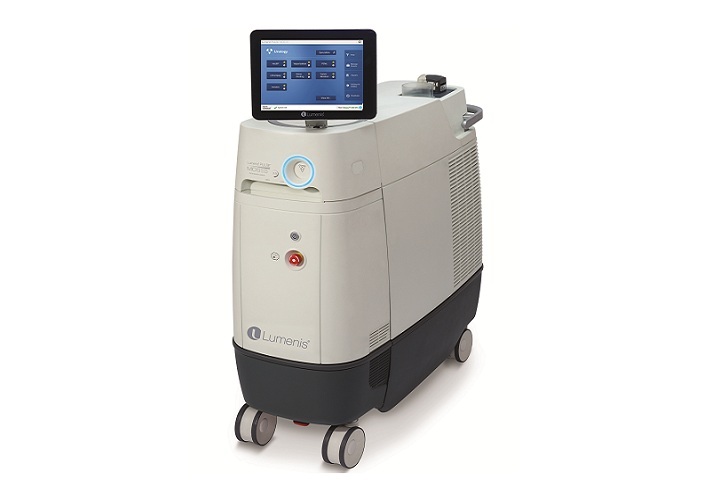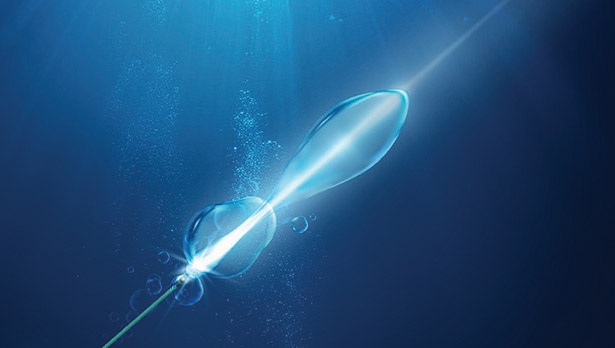The gold standard of laser lithoprisy is the holmium laser. The technology has advanced incrementally through several generations in a way that’s very similar to developments in mobile phones, in that each generation provides users with greater speed and versatility. MOSES technology marked the fourth-generation holmium laser system, and now MOSES 2.0 continues to enhance gold-standard therapy.
MOSES elevated the holmium laser’s capabilities —MOSES technology (Lumenis) is a platform that manipulates the holmium laser waveform, as well as the first technology to deliver holmium energy over two pulses. The approach allows MOSES to deliver more energy to the stone, achieve finer fragmentation, and produce less retropulsion, which improves visualization and spontaneous stone clearance for laser lithotripsy.
In a laboratory study, we showed that the MOSES distance mode yielded 28% greater fragmentation than the standard short-pulse holmium mode when in contact with the stone, as well as 100% more fragmentation when the fiber is 1mm from the stone.1 This is important clinically when we use a dusting technique. During dusting, only 23% of laser pulses are delivered within 0.5mm of the stone, while 48% happen at a distance greater than 1mm.2 Because MOSES is optimized for contact and distance, it is an efficient choice. In a recent clinical trial, MOSES reduced fragmentation time 32% and procedure time 20% compared to standard holmium.3
Another factor is that the distance reach of MOSES pulse reduces creation of large fragments during the popcorn technique—an important endpoint because residual fragments greater than 2mm are associated with repeat surgery.4 In my experience, the MOSES laser is also particularly useful in mini-PCNL because it leads to faster treatment of larger stones, less retropulsion and less bleeding, allowing me to perform a tubeless technique.
MOSES 2.0 continues the holmium evolution —With the development of high-frequency holmium lasers, we wondered how much frequency is actually required for effective fragmentation, as well as how the combination of frequency and fiber speed affects fragmentation. In a recent laboratory study, we found that a moving laser fiber maximizes the frequency’s usefulness. By increasing the fiber speed from 1mm/sec to 3mm/sec (MOSES distance mode), ablation was increased by 140%. 5High-speed imaging analysis showed that 15 pulses could be applied to a single location for maximum effect. If the fiber was moving at 1mm/sec, this equated to a frequency threshold around 62 Hz. If the fiber is moving 2mm/sec, we can increase that threshold to 123 Hz.
The ability to use 120 Hz is now a reality with the launch of MOSES 2.0. Using the MOSES 2.0 120 Hz laser with a faster painting motion increases fragmentation speed and may be more efficient for pop-dusting as well. Optimized photothermal ablation at contact and distance allows the surgeon to work more efficiently. The end result is shorter procedure time, as well as potential the ability to avoid staged procedures for large kidney stones treated with ureteroscopy.
MOSES holmium lasers have staying power — Getting laser lithoprisy “just right” requires a careful balance of material absorption, fluid absorption and safety. The MOSES 2.0 holmium laser is the gold standard of laser lithoprisy because it gets that balance just right. In contrast, the thulium fiber laser has a high fluid absorption, which may prevent efficient ablation at distance, while its excessive long pulse duration may lead to photothermal collateral damage if using high power settings. MOSES 2.0 has optimized photothermal ablation at contact and distance, improving the efficiency of laser lithoprisy.
Reference
1. Aldoukhi AH, Roberts WW, Hall TL, Ghani KR. Watch Your Distance: The Role of Laser Fiber Working Distance on Fragmentation When Altering Pulse Width or Modulation. J Endourol. 2019 Feb;33(2):120-126.
2. Aldoukhi AH, Black KM, Hall TL, et al. Defining Thermally Safe Laser Lithotripsy Power and Irrigation Parameters: In Vitro Model. Endourol. 2020 Jan;34(1):76-81.
3. Ibrahim A, Elhilali MM, Fahmy N, Carrier S, Andonian S. Double-Blinded Prospective Randomized Clinical Trial Comparing Regular and Moses Modes of Holmium Laser Lithotripsy. J Endourol. 2020 May;34(5):624-628.
4. Black KM , Aldoukhi AH, Teichman JMH, et al. Pulse modulation with Moses technology improves popcorn laser lithotripsy. World J Urol. 2020 Jun 6.
5. Aldoukhi AH, Black KM, Hall TL, Roberts WW, Ghani KR. Frequency Threshold for Ablation During Holmium Laser Lithotripsy: How High Can You Go? J Endourol. 2020 Oct;34(10):1075-1081.





















